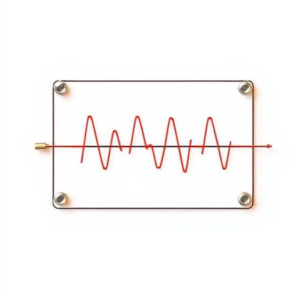Filter design is about creating electronic circuits or systems that allow certain frequencies of a signal to pass through while blocking others. Filters are used in various applications, from audio systems to communication devices. Let’s break down the three common types of filters: Low-pass, High-pass, and Band-pass filters in a simple way.

What is a Filter?
A filter is like a “frequency gatekeeper.” It controls which frequencies (sounds, signals, etc.) are allowed to pass through and which are blocked. Filters are used to modify signals by removing unwanted noise or separating different frequency components.
1. Low-pass Filter:
A low-pass filter allows low-frequency signals to pass through while blocking higher-frequency signals.
- How it works: Imagine you have a mix of low and high-pitched sounds. A low-pass filter lets through the “low-pitched” sounds (low frequencies) and blocks the “high-pitched” ones (high frequencies).
- Example: Think of listening to a song, and you want to remove the sharp, high-pitched noises (like hissing or buzzing) but keep the bass (low frequencies) that you enjoy.
- Application: Low-pass filters are commonly used in audio systems to remove high-frequency noise or in audio equalizers to emphasize bass sounds.
- Frequency Response: The filter allows frequencies below a certain cutoff frequency to pass and attenuates frequencies above that cutoff.
Example of a Low-pass Filter:
- Cutoff frequency: 1,000 Hz
- It will let all signals below 1,000 Hz pass through and block frequencies above 1,000 Hz.
2. High-pass Filter:
A high-pass filter does the opposite of a low-pass filter. It allows high-frequency signals to pass through while blocking low-frequency signals.
- How it works: Imagine again having a mix of low and high-pitched sounds. A high-pass filter lets through the “high-pitched” sounds (high frequencies) and blocks the “low-pitched” ones (low frequencies).
- Example: In an audio system, a high-pass filter could be used to eliminate rumbling or booming low-frequency noise that doesn’t add value to the sound.
- Application: High-pass filters are used in audio systems to block unwanted low-frequency noise or to emphasize treble sounds.
- Frequency Response: The filter allows frequencies above a certain cutoff frequency to pass and attenuates frequencies below that cutoff.
Example of a High-pass Filter:
- Cutoff frequency: 500 Hz
- It will allow all signals above 500 Hz to pass through and block signals below 500 Hz.
3. Band-pass Filter:
A band-pass filter allows a range of frequencies (a band) to pass through, while blocking frequencies both below and above this range.
- How it works: Think of the filter as a “passage” that only allows signals within a certain frequency range to pass through and blocks anything outside that range.
- Example: A band-pass filter is like tuning a radio to a specific station. It allows only the station you want to hear to come through while blocking all other stations (frequencies).
- Application: Band-pass filters are used in communication systems, such as radio transmitters and receivers, to select a specific frequency band, and in audio systems for isolating specific sound ranges (like picking out the mid-range vocals in music).
- Frequency Response: The filter allows frequencies within a certain range (from a lower cutoff frequency to a higher cutoff frequency) to pass and attenuates frequencies outside this range.
Example of a Band-pass Filter:
- Lower cutoff frequency: 500 Hz
- Upper cutoff frequency: 5,000 Hz
- It will allow frequencies between 500 Hz and 5,000 Hz to pass through and block frequencies below 500 Hz and above 5,000 Hz.
Key Differences:
- Low-pass filter: Passes low frequencies and blocks high frequencies.
- High-pass filter: Passes high frequencies and blocks low frequencies.
- Band-pass filter: Passes a specific band of frequencies and blocks frequencies outside that range.
Practical Applications of Filters:
- Low-pass filters: Used to smooth out signals, remove high-frequency noise, and emphasize lower frequencies. In audio systems, they are used to enhance bass sounds.
- High-pass filters: Used to remove low-frequency noise like hums or rumbles. In audio, they can be used to enhance treble and eliminate unwanted low-frequency distortions.
- Band-pass filters: Used in systems that need to focus on a specific frequency range, such as tuning into a particular radio station, isolating certain sound ranges in music, or in communication systems to focus on a particular signal band.
Summary:
- Low-pass filter: Lets low frequencies pass and blocks high ones.
- High-pass filter: Lets high frequencies pass and blocks low ones.
- Band-pass filter: Lets frequencies within a specific range pass and blocks those outside the range.
By carefully choosing which type of filter to use, engineers can design systems that isolate and process specific parts of signals, making them crucial in many fields, from audio processing to communications.











